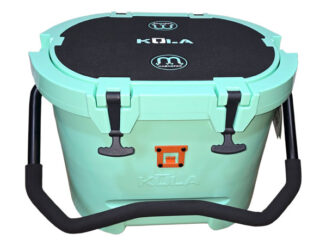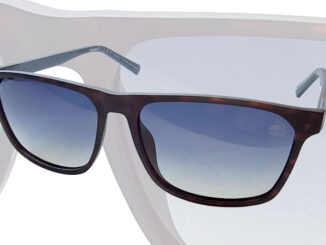
Winter fronts might discourage some, but this Prairieville angler heads to Pointe-Aux-Chenes’ Sulphur Mine for consistent action.
The massive 6×6 bull elk strolled regally from the oak grove, walked down the bank and plunged into the water, laying down and caking itself in the cooling mud.
Twelve members of the board of the Louisiana Outdoor Writers Association, standing at the window of the luxurious lodge, looked on in gap-jawed amazement as the trophy bull rolled around unconcernedly, coating its entire body in a protective sheath that would shield it from biting flies.
It could have been a mountain lodge in the Colorado mountains, and we could have been watching what is commonly known as an elk “wallow,” where the huge ungulates act more like swine than imperious kings of the hoofed species.
It could have been a lot of those things, but it was a Louisiana bayou we were watching, and this magnificent creature lazily rolled over and contentedly scratched its back on a handy cypress knee.
We were visiting Houma in August for our annual LOWA conference, and were the guests of Bobby Burguieres and the Grand Coteau Plantation in Raceland, who were graciously hosting our annual board meeting and members “breakout.”
Grand Coteau Plantation (985-856-4880) is a first-class lodge with large acreage offering hunts for white-tailed deer, axis deer, fallow deer and elk.
But you wouldn’t have to hunt very hard to find the big fellow that drew the entire membership of the board away from the meeting table to watch it take a cooling swim.
It is obviously a lodge pet, and a favorite.
It was also quite tame, since the rest of the membership was out on the first-class five-stand sporting clays range while we board members slaved inside. The incessant booming of the shotguns mattered little to the king, and it lay around in the bayou as serene as any elk in any wallow in the Colorado mountains.
The standing joke was this was going to be the shortest board meeting in the history of LOWA, because as chairman, I was going to get it over as soon as possible. I was jealous of the membership, out banging away at the clays, while I had to sit inside and conduct association business.
Regular readers of this column know I’m not the most knowledgable of shotgunners, a proclivity Jerald Horst, LSU fisheries biologist and duck hunter par excellence, insists is the gentleman’s realm of the shooting sports.
And perhaps it is. I’ve just always been more attracted to hair than feathers, and I like my adrenaline surges in great big mothers of lightning bolts that turn my flesh into quivering, jellified mush. When that monster whitetail shows himself, making me barely able to support my skeleton, the tendons unravel from the bones and leave me shaking uncontrollably in a helpless pile.
Duck hunters, on the other hand, prefer their jolts in small, quick, numerous shocks, the back muscles tightening as the big greenheads cup into the deke spread, the shooters leaping up from the confines of the blind, unleashing clouds of steel into the winged maelstrom now frantically beating against the resisting wind, trying to gain atmosphere away from the evil Trojan relatives sitting so placidly on the still surface of the lake.
To each his own, I say.
So while I’ve never been a real aficionado of the shotgunning sports, nor have I even been much of a skeet shooter, you only have to offer a round of sporting clays, or five-stand, and I’ll follow you like a child led by chocolate.
Scott Roe, a new supporting member of the LOWA and owner of Spillway Sportsman in Brusly, was out on the range, coaching less adept members in the finer points of five-stand, an adaptation of sporting clays that approximates the excitement of what has been called “golf with a shotgun” without the commitment of the huge wooded tracts necessary to correctly set up a good sporting clays course.
Five stand is set in a semi-circular range like skeet, and the shooters move from station to station like skeet. But the shots are far more varied, and to my way of thinking, much more exciting. Skeet and trap have many enthusiasts. But five stand and sporting clays have brought a huge increase of pedestrian shotgunners to the fold — these sports are just a heck of a lot of shooting fun.
As the last of the members made their way off the range, making room for the board members to begin their turn, Roe came up to me and offered a beautiful new Beretta AL 391 Teknys. This is a new offering from Beretta, an upgrade version autoloader with a self-compensating gas system long proven by their workhorse Urika semi-autos.
But the Teknys is much more than a workhorse, appealing to the epicurean in all of us. Distinctive checkering, gorgeous woods and silvery receivers ornamented with graceful lines and polished sides stand out in the racks, waiting to be picked up, caressed and fired.
The Teknys is a beautiful gun and a thrill to shoot. The self-compensating gas system allows the shooter to mix any loads with no gas rings or pistons to adjust. Just the right amount of gas is diverted out of a vent at the tip of the fore-end to provide enough pressure to cycle the gun. Of course, the gas system results in a noticeable reduction in felt recoil.
The barrels are fitted with Beretta’s Optima-Bore overbored barrels for recoil reduction and more even pattern distribution.
One of the most noticeable cosmetic effects of the Teknys is Beretta’s X-tra Wood waterproof enhancement process. An X-tra Wood stock has the look and grain pattern of premium walnut, but with a weather resistance that approaches synthetic stocks.
The gun Scott handed me gleamed in the August sun, and showed a beautiful swirled pattern of grain. These are guns that can walk the runway in the beauty pageant, then shuck the tiaras and gowns, and get down and dirty in camo in the duck blind with you — exactly like your beautiful bride.
I shot several rounds with the Teknys, admiring its gleaming beauty and utilitarian performance. Either I was off, out of practice, or the stock’s length of pull was a little long for me. I was hitting about 50% on my shots, and starting to take some amount of harassment from the assembled writers about being the only gun writer in the crowd, and producing a less-than-stellar performance.
Horst, shooting his favorite Ithaca 200 E side-by-side, an ornate, silver-sided piece in diminutive 20 gauge, was steadily showing everyone up, and making me look foolish.
Kevin Diez, well-known chef, caterer and LOWA board member, was also shooting a Scott Roe loaner, a Browning Citori 525 Sporting Clays over-and-under.
Now let me say here I like Browning Citoris. For some reason, I always seem to improve my scores when I’m shooting one. Call it mental, call it foolish, but we all know you do anything better with confidence, and my confidence always improves with a Citori.
It was the same today. Chef KD had been up late the night before, producing a feast for the membership that they talk about to this moment. He then had gotten up and faithfully attended our board meeting. Now, game sport and outdoorsman that he is, he was out in the sweltering August sun, pounding away at the clays with us.
He eyed the semi-auto longingly. I looked with lust on the Citori. A swap was made. He walked away happy, I was jubilant. Roe slid up behind me to coach me on technique and warn me where the next clays would be thrown.
“Go help Chef,” I said. “I’ve got the gun I wanted to try.”
The new Browning 525 series is the third generation of sporting over-under shotguns to crown the Citori product line. Aimed at both the sporting clays competitor and the hunter, the 525 offers numerous evolutionary improvements over the Citori 425, the former top of the line.
The most obvious change from the previous 425 models is the flaring pattern of cut, flat diamond checkering on the pistol grip and fore-end. More area is covered than previous models. The comb of the stock has slightly more drop than previous models, and the wood quality is substantially upgraded with a beautiful oil-rubbed walnut. The ventilated top rib is over a slim Schnabel fore-end that adds a clean, air-like beauty to the gun. The mid-rib was designed to change the center of balance rearward for a speedier swing.
The barrels are back-bored and ported with chrome-lined chambers and screw-in choke tubes. Back-boring slightly enlarges the bore (over-boring), but only for a partial length of the barrel in front of the chamber. Leaving the last part of the bore the original diameter causes a sort of choking effect, but in a gradual manner. This results in less deformed shot, and tighter, more uniform patterns.
According to David Reynerson, general manager of Bowie Outfitters and a master gunsmith himself, overboring is boring out the entire barrel perhaps ten-thousands of an inch over industry standards. This is done for the same reason as back-boring — the shot leaves the chamber and is compressed less in the barrel, resulting in less-deformed shot and more-uniform patterns.
Fire control has been improved dramatically in the new 525 with a single selective trigger that is crisper than previous units, and has less overtravel. The silver-nitride finish, alloy steel receiver, and top lever are extensively covered with engraving, and the barrels have a highly polished blue finish.
This is one handsome gun, one to make competitors on the five-stand range take notice of you. But it also is designed to improve your performance in the fields.
Because that’s what the 525 is designed to be — a sporting clays competitor and a hunter. This flagship of the Citori line is at home on the line or in the field, chasing the upland birds or the wetlands flocks.
So how did it perform? Or perhaps the question should be how did I perform with it? Before the shooting finally stopped, and they had to run us off the range to come back to the lodge for a five-course Cajun meal, I had improved my hits dramatically, catching up to Horst and actually making him sweat it a bit — and the catcalls had changed to forced and muttered compliments.
Confidence is everything — I was confident the instant I hefted the Citori, and it showed in my shooting. Chef K-D improved too. Between the advice of Roe, and the smooth action and reduced recoil of the Teknys, his hits improved noticeably by the end of the session.
We both walked away tired, sunburned, happy and proud of our performance with two outstanding examples of the shotgunning arts.
Gordon Hutchinson’s best-selling novel, The Quest and the Quarry, is the perfect Christmas gift for the deer hunter or outdoorsman in your family. It is available by calling (800) 538-4355 or by visiting www.thequestandthequarry.com.


